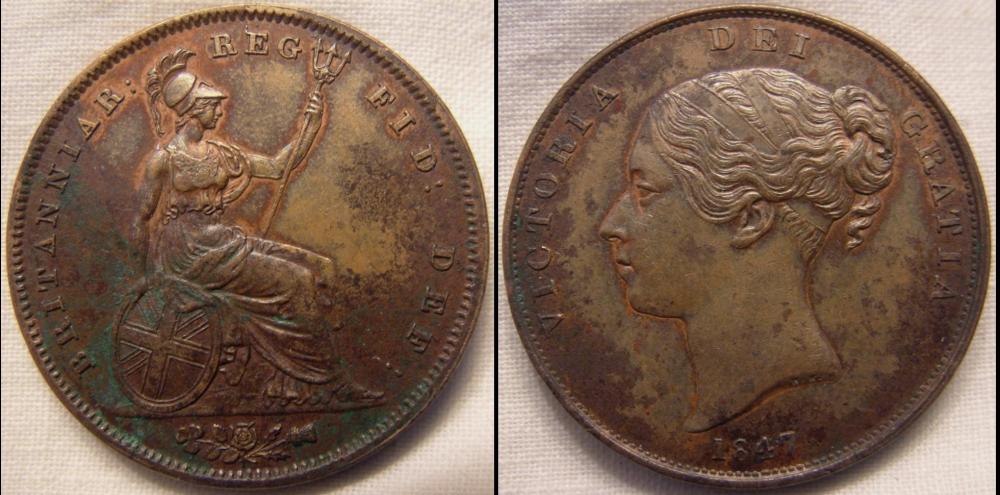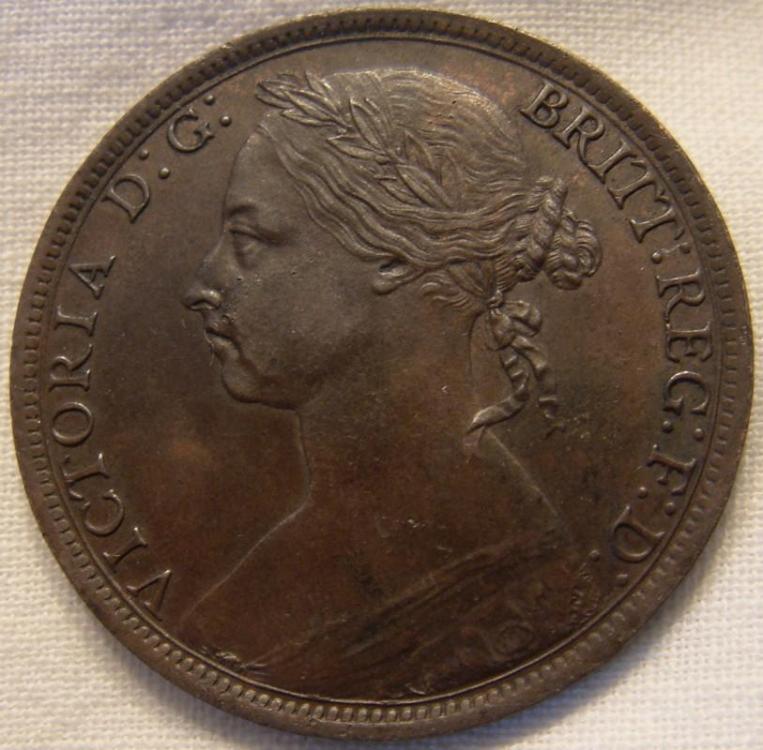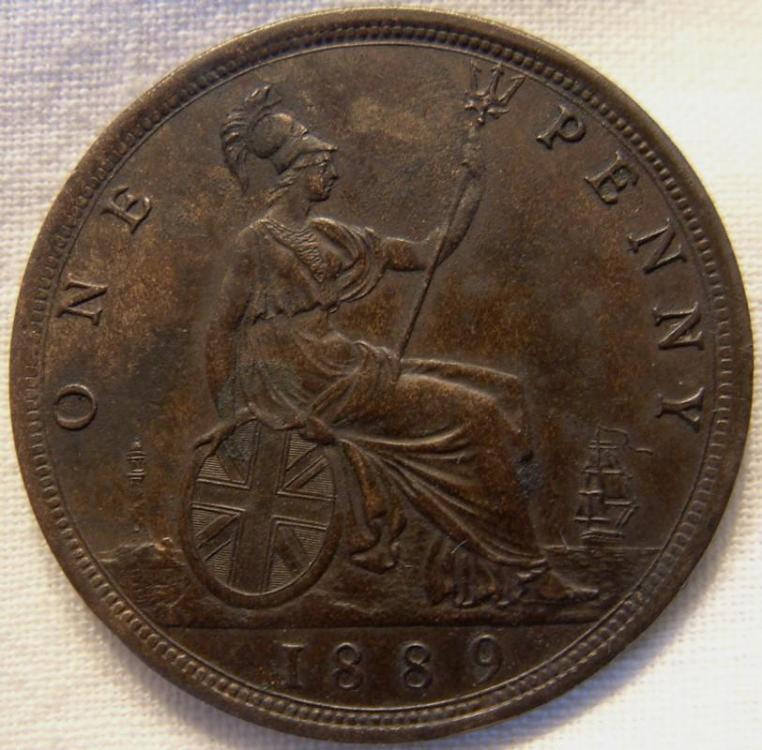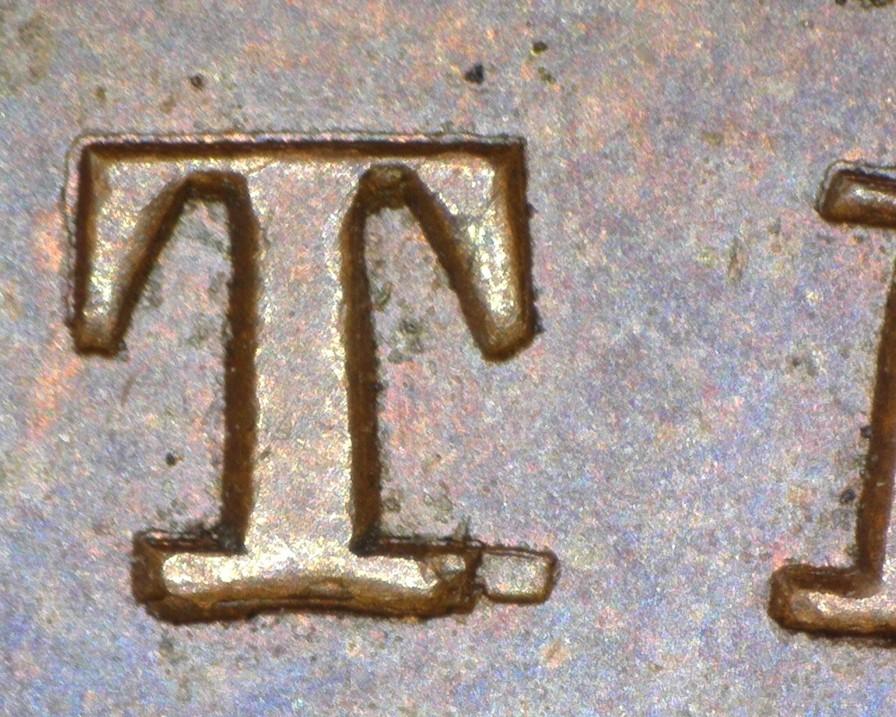-
Posts
786 -
Joined
-
Last visited
-
Days Won
84
Content Type
Profiles
Forums
Events
Downloads
Store
Gallery
Articles
Everything posted by alfnail
-
Hi Jerry, I think there are at least 3 different reverse dies for the F14, all with different, mutually exclusive, die flaws. Please refer to my 2015 post below. More Pennies - Page 29 - British Coin Related Discussions & Enquiries - British Coin Forum - Predecimal.com
-
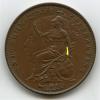
Grannie's old sayings
alfnail replied to terrysoldpennies's topic in Nothing whatsoever to do with coins area!
"Bye, it's a rum do" and "hello stranger" when I hadn't been round recently.......front door always left open in those days! Probably preferred my grandad's though, two of his favourites:- "Just do the Maths lad" "That's right champion, the lad had a grand knock"...............generally when Yorkshire were beating Lancashire in the 1960's.....or anyone else for that matter! -
Thanks Pete, the coin will be winging it's way to Jerry in the next couple of days, he has kindly offered to give an expert opinion.
-
Many thanks to everyone who has replied about my 1847. No one is telling me to just leave it 'as is', so I guess I will need to do something...........but not brave enough to have a go myself at the moment. The verdigris does look quite hard, so I don't think it will be an easy job to remove. I think in the first instance I may ask a TPG to advise, and perhaps provide me with a cost. Apart from the member who emailed me about that possibility does anyone else have any experience of passing to a TPG and getting good results with this type of thing? I'm thinking the coin must be worth spending a little bit if necessary just to get it done professionally by someone with experience, unless anyone here has had a bad experience which might put me off. Thanks again
-
I have CP1847MJ, pictured below. It has pretty good detail, but does have the verdigris as can be seen. I keep coming back to the question of whether I should try to remove it / improve the coin if possible. As yet I haven't been brave enough to attempt anything myself; I have never tried verdigris removal before, and would first want to have practice attempts on less valuable similar pieces anyway. There's also a part of me saying leave it alone....but then I'm worried that the verdigris may develop. I would welcome views from members on this please, thanks.
-
Thanks Martin, I'm thinking you are probably right.........let's see if any member claims to have a positively identifiable Cd
-
Here is my own widest date, which I think is an undocumented BP 1889Ad (R + r). Extra leaf is definitely visible, also right for a 'd' date width suffix.
-
Hi Pete, it looks as though your obverse probably has the extra leaf, making it Gouby Obverse R, and also looks like the 9 is wide enough to make it a BP 1889Ad. MG in his new pages has the widest 9 as only seen on Obverse S, i.e. BP 1889Cd. He has not documented a BP 1889Ad. Have you had opportunity to check the width accurately? I have just checked Richard's englishpennies and he has the widest date as Obverse R, but then called it a Cd. I think it needs to be either Ad (R + r) or Cd (S + r). Don't think the example is high enough grade to examine the important leaf area and decide which obverse type for sure anyway. Hoping this is making some sense as 2 bottles down today!
-
Was it an interesting 'penny' article Mike?
-
Haven't seen many high grade F148's Mike, but a fair number of really low grade ones.
-
Thanks all, sounds dangerously new and exciting! Should I use de-ionized water or just ordinary tap?
-
I don't think it's a repaired 8. All the numerals are doubled, like this one, die 'bounce'.............not a repair.
-
I have a few 0.925 silver commemorative pieces, one or two of which have good detail but marks like the one on this picture. Has anyone any experience as to whether it is worth trying to improve such pieces please? i.e. removing marks, without degrading the detail.
-
He has relisted it, currently with an opening bid of £1, and no mention of die 3
-
Hi Mike, Yes, whilst it sounds 'on the face of it' a little strange, I believe that it is true. On Gouby's website you will note the wording highlighted in yellow below. In addition to the REG Colon low position you can see other identical features on the 1841 Proof and 1841 REG: currency coins, such as the repaired letter which Michael mentions. They both also display thicker BRITANNIAR plume feathers, a feature not seen on any later years. The reverse die used for this proof is with colon dots after REG: and it is more than likely that when it was finished being used as a proof die it was used to strike the rare 1841 currency pennies also with colon dots after REG:. We know for a fact that it was the proof die that were used for the 1841 currency coins, with colon dots after REG:, as they are identical in all ways, including a repaired letter. It is therefore probably that only ONE reverse die was ever used to make the proof and then the currency coins.
-
Hi Mike, nice ebay find. The 1841 REG: is paired with an obverse which develops a flaw through the numeral 8 of the date on later strikes, as per the picture below. It then also starts to flaw through the top of the VICTORIA legend. The best example of this that I have seen is the one shown on Richard’s englishpennies website. What is particularly interesting about this is that the exact same obverse, flawed in identical positions but further deteriorated, is also seen paired with a non REG: reverse. This latter pairing, to my knowledge, is quite a bit rarer than the 1841 REG:
-

Jacaranda at Laidley Queensland
alfnail replied to ozjohn's topic in Nothing whatsoever to do with coins area!
Well if that doesn't inspire good exam results then not sure what will. -

Penny Acquisition of the week
alfnail replied to Paulus's topic in British Coin Related Discussions & Enquiries
A really good spot Martin, well done -
I checked and found this is the case on both the large and small date types of 1859. Slightly further on, he continues:- Interesting Mike. I knew that I had seen that quite often but not explored further. I have just checked all my No WW's and found this 'secret' mark on all of them, including 1858's as well as 1589 and 1860. Picture below for reference. Bramah also talks about other secret mint marks, is anyone aware of what they might be on the YH Copper Penny? I guess with banknotes that was done as a fraud prevention measure prior to such things as microprinting becoming available. P.S. I still have my spare decent copy of Bramah.......not a sales pitch!!
-
Higher grade specimens can have fuller breasts! I believe that the 1860/59 is a single die pair. Reverses always have the weak legend, especially in BRITANNIAR, and even on higher grade pieces. The clover is also detached from its stalk, although that feature is also seen on other years. Obverses, whether full 6 or partial 6, always have identical marks under Victoria's chin, and again under her pony tail. They also have the doubled tie ribbon.....which isn't really a tie ribbon but a clashed die, as explained in Peck Page 404, and better on MG's website.
-
That's lovely Pete, did you buy it?
-
Thanks Richard, but I am not sure I will ever be in a position to do much more than posts on Predecimal. I had a few years retirement where I was able to spend a lot of time on the hobby, but I am no longer in that position. I could do something like retrieving all my Predecimal copper penny posts and putting them all in one place in a new thread, which could be added to if anything new and relevant needs posting, by myself or other members. We have already discussed book, CD, website options but I am not about to embark on a venture like that myself. The best place to describe copper Victorian pennies is possibly on your own site, and you are most welcome to grab any of my material and put it on there if you wish. I have no desire to attempt to profit from my material, and am more than happy to share for the benefit of the numismatic community. The main problem that I see with any Victorian Copper penny book (or website) is deciding what the sub-varieties should be for each year, and where to draw the line with respect to things such as legend repairs, date differences, colon positions, various dots. A new book (site) should in my opinion start with an introduction about all these different 'features', many of which will have already been mentioned by Gouby or Bramah, and a brand new list (with new naming convention) of each coin which the author considers to be a variety. The naming convention would of course have to allow for any new discovery to slot in neatly. Pictures of the varieties for each year can then follow on, with some mention of rarity. As I have said before, I think that discussion of what is, and what isn't, a sub- variety for each 'feature' that is seen should perhaps first take place on a forum such as this. Personally I would not be happy to presume that I knew enough to forge ahead without spending a good deal of time involving others. Also, I would need to examine coins from other collectors in order to picture all the features to the consistent standard I would like. e.g. I don't have many 1843's, 1849's, 1856's and 1860's in my own collection!
-
Hi Mike, It's this bit of Bramah's quote which I find particularly difficult. Not sure I have ever seen anything which resembles 2 dots in lower loop of 8. If any member wants a decent copy of Bramah then please message me, I do have 1 spare, but will be asking for close to going rate!
-
The flaw at front of truncation, bottom left in above set, isn't particularly clear on that example, so here's another one, again on large rose reverse, where flaw has developed a little more......still not as much as it has by time reverse moves to reverse 3 (bottom right picture in above set)
-
Yes, no surprise Richard. This 8/? obverse (with the 1/1) has 3 reverse pairings, the second being the large rose large date variety. The obverse starts off with no die flaws and then progresses as follows:- First flaw starts above A of VICTORIA and then develops through the bottom of A towards Victoria's head. The flaw at the queen's truncation starts afterwards, I think around the same time as another flaw through the base of the letters OR of VICTORIA All of those are seen to develop on examples of Large Rose, (Reverse 2) seen paired with this obverse The same flaws are then seen on a later reverse (3) without the large rose, but flaws are more developed (timeline). Hopefully the pictures below will clarify. P.S. The other 8/? reverse we have been discussing I think has only a single reverse paired with it.......i.e. the one with the repaired A. So I prefer to think as 2 different types, albeit very similar.


